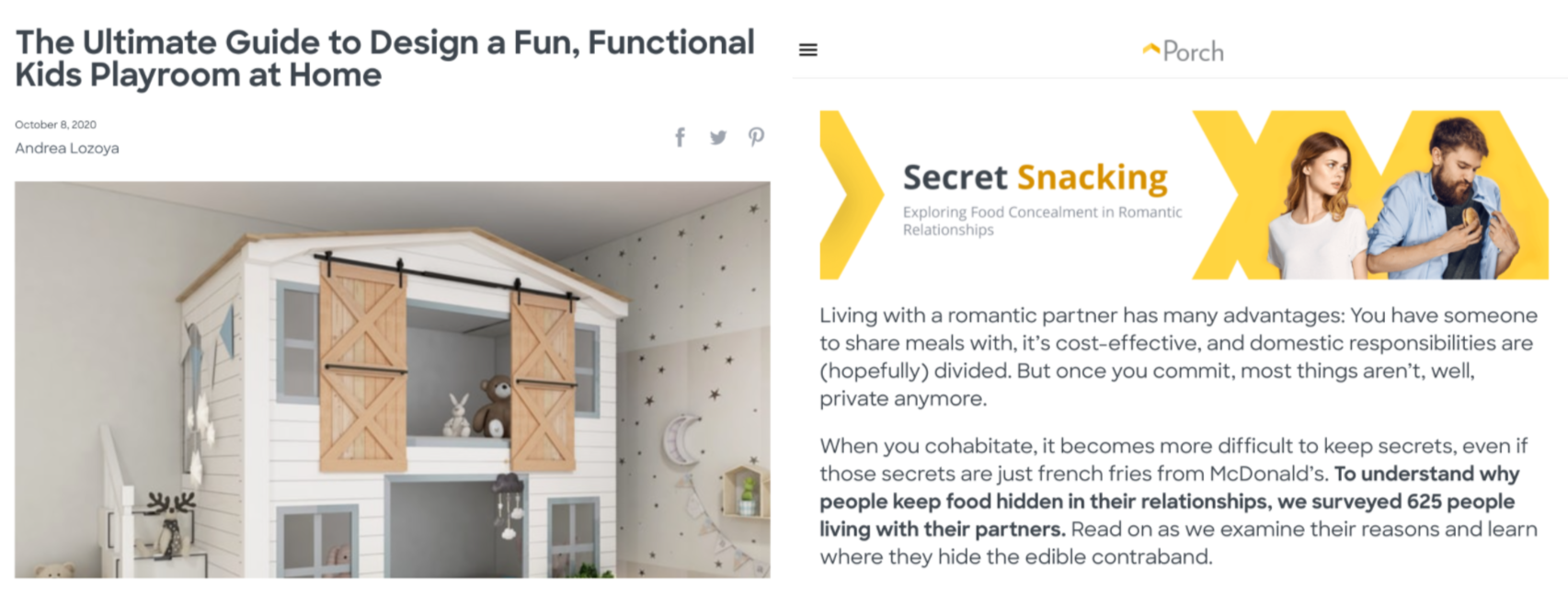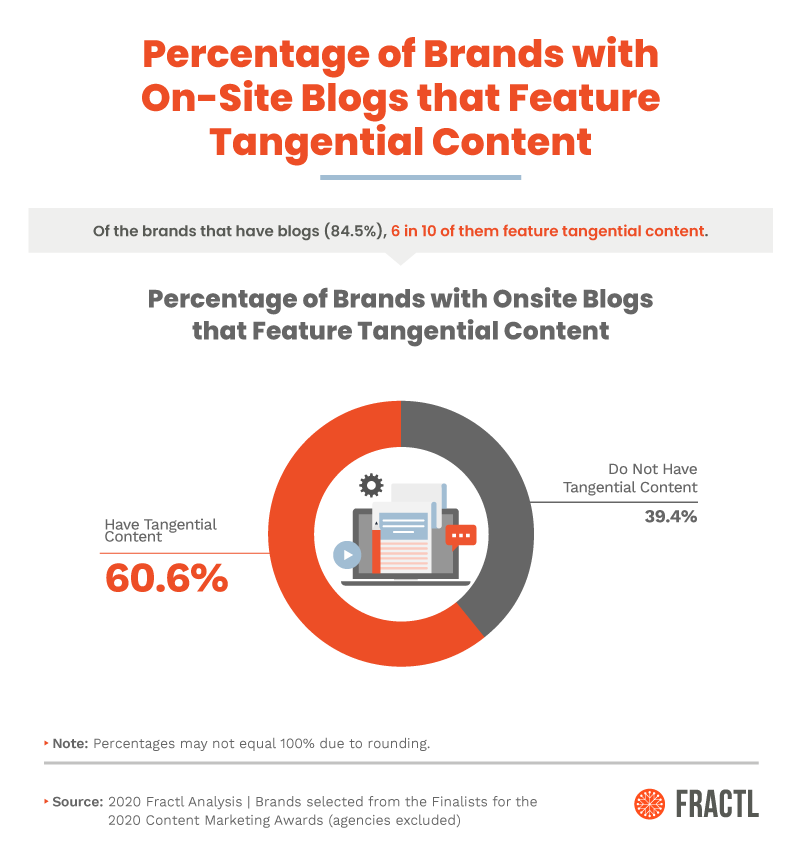At Fractl, creating content marketing campaigns paired with strategic digital PR outreach is our bread and butter. This is how we earn links for our clients, and after eight years of producing campaigns and earning backlinks, we know what works.
It’s typical to hear marketers talk about the 80:20 rule when mapping out an off-site content plan: 80% of your results will come from 20% of your projects. There might be a few home-run ideas in there that will earn you many links on a lot of websites across the media spectrum. Then there will also be several solid content campaigns that are more on-brand that get strong links and coverage on sites relevant to your niche.
When we’re ideating for the big hit campaigns, we often turn to one type of content that continues to prove its value over and over: tangential content.
What is Tangential Content?
Tangential content is any content that does not directly relate to a product or service offered by the company. Tangential content is especially useful for brands in a “boring” niche. Why? Because to earn news coverage and lots of backlinks to your site, you need to create something newsworthy and useful to online publishers.
The difference between tangential content and on-brand content isn’t hard to spot once you see it. Take, for example, two blog posts by Porch, a brand we’ve worked with before.
Porch is a business dedicated to helping customers improve their homes and make moving easier.
The first article is an informative guide on how to DIY your kids’ playroom. The second post reveals insights into the snacking habits of co-living partners. The second is clearly tangential content, while the first is more on-brand. On-brand content certainly has its place, but which piece of content do you think is more likely to earn news coverage and top-tier backlinks?
In an attempt to uncover just how many brands and businesses are taking advantage of the benefits of tangential content, we analyzed over 80+ companies’ content from the last three months. We selected these brands based on Content Marketing Institute’s List of Finalists for the 2020 Content Marketing Awards (excluding agencies).
Read on to discover just how prevalent tangential content is to brands and businesses in 2020.
How are Brands Using Tangential Content to Earn Media Attention?
Around 31% of the finalists for the 2020 Content Marketing Awards used tangential content off-site to earn digital PR coverage.
Of that 31%, the types of off-site tangential campaigns that were most common were studies (34%), blog posts (10.2%), and PDFs (14.3%).
Like the example we used above from Porch, studies are a popular way to dive into tangential content because they allow you to explore a topic that’s somewhat related to your brand and earn press coverage for the insights you glean.
Of those brands producing digital PR tangential content campaigns, 50% used a press release to distribute the content, while 46% had a hosted landing page, meaning the study lived on their website.
At Fractl, we believe that hosing your digital PR campaign on your own site and distributing it to journalists via strategic email outreach is the most beneficial. When you host the project on your own site, you get the same press coverage, but you also earn valuable backlinks that boost your site’s SEO.
Including Tangential Content on Your Blog
Our analysis found that over 60% of brands who were finalists for the Content Marketing Awards utilized tangential content on their blog.
Many more brands were likely to write about off-brand topics on their blog than they were to create digital PR campaigns with that content. This could be because more conservative brands are usually more risk-averse when it comes to digital PR coverage.
Tangential Content for Any Niche
Still not convinced that your brand could benefit from tangential content because it’s in a boring or stale industry? Here’s a list of different brand categories that used tangential content. The first column has the industry that the brand operates; the second column is the type of tangential content that the company created.
You have technology companies creating content on female entrepreneurs, while you have finance companies delving into the world of banking in Brazil.
Opportunities for tangential content abound in every industry, not just the fun ones.
Brands that Utilize Tangential Content, Off-site, and On-site
To give you an overview of the analysis, check out the graphics below to see who’s utilizing tangential content in their content strategy, both on-site and off-site.
Some brands that feature tangential content, both on-site and off-site, are AARP, Datto, and Bank of America. Meanwhile, brands that haven’t included tangential content in their strategy (as far as we could tell) are Babbel, Intel, and Surescripts.
Methodology and Fair Use
To collect the data presented above, we selected brands from Content Marketing Institute’s List of Finalists for the 2020 Content Marketing Awards. We excluded agencies from this analysis.
All in all, we looked at the work from 84 brands from the past four months (June, July, August, September 2020). To do this research, we combed Google Search for brand mentions, checked BuzzSumo for backlinks, and analyzed the brands’ websites thoroughly.
We define tangential content as content that does not directly relate to the brand’s product or service offering. For example, a campaign about mental health from a fast-food chain is considered tangential. A campaign from the same brand about menu offerings is not.
This content is purely exploratory, and future research should approach this topic more rigorously.
Our team worked hard on this study. If you enjoyed this report and would like to share it, please link back to this page in your coverage.











